Tom Walker organised an all-day joint meeting with the Conchological Society of Great Britain and Ireland at BBOWT’s Hartslock reserve on Saturday 6 August 2022. He was joined by volunteer warden Chris Raper, who led a general interest walk round the reserve in the afternoon. The morning session was reserved for serious snail and slug hunting, and participants spent much of the time on hands and knees, searching for specimens, many of which were very small. Following weeks with no rain and high temperatures, the ground was very dry, so the hope of finding many living shelled molluscs, let alone slugs, seemed slight. But despite the unfavourable conditions, eight people turned out in the morning, including three from the Conchological Society. Molluscs are under- recorded on the reserve. There are no records on the Conchological Society database prior to 1983. Since then, there have only been 35 records covering 19 species (with a further one on iRecord) – and no slugs. So it was high time that a more comprehensive survey was carried out.
The group started out along the south-western margin of the reserve where a small path runs between scrub and woodland (which is outside the reserve) with mature Oak, Beech and Ash trees. Live Round-mouthed Snail Pomatias elegans was present in abundance, as would be expected on a chalky hillside. An interesting find were examples of Brown-lipped Snail Cepaea nemoralis in aestivation, with a very well developed epiphragm – a sign of the extremely dry conditions. A few other species typical of shaded ground were observed, some living but also the shell only of several taxa. It had been hoped that some slugs would be found, but the ground was much too dry, and any that might have been present would have descended well below ground level. Next, the group climbed the steep hillside to explore the area of grass and scrub. This produced good numbers of typical species which are adapted to very dry conditions, but all were shells only apart from living Large Chrysalis Snail Abida secale. It was disappointing not to find any Moss Snail Pupilla muscorum, but this species seems to be on the decline, and it is possible that it is no longer living on the site – previously there has only been a single record, in 1983. Another declining species is Heath Snail Helicella itala; numerous dead shells were found but no living examples, although live specimens had been seen earlier in the year. The third site investigated was a small accessible area in the fringe of scrub woodland along the north-eastern margin of the reserve. Among the scrub was an area of longer grass which looked promising. It was good to find a few living molluscs in this slightly cooler shaded area, but the ground was still very dry and there was no evidence of any slugs. Somewhat surprisingly, Rounded Snail Discus rotundatus was not found here.
The group returned to the reserve entrance for lunch, and took the opportunity to examine some of the numerous anthills among the grass, built by the Yellow Meadow Ant Lassius flavus. Naked eye searching produced several small species, including Blind Snail Cecilioides acicula, but a sample taken for sieving from abandoned anthills turned up trumps. In about 1 litre of sediment there was a total of 150 shells from 20 species, including two which had not been found elsewhere and were new to the site: Prickly Snail Acanthinula aculeata and Dwarf Snail Punctum pygmaeum, as well as several slug plates. Many of the anthill remains were very small and fragmented, some being less than 1mm in size. All the anthill specimens were dead, and it is impossible to determine how recent they are – some may have been in the ground for many decades or even longer, but it is good to know that at some time in the past these species were present at Hartslock, and could well be found living if visits were made in more favourable climatic conditions. And we do now know that some slugs do inhabit the reserve, even if only their internal shelly plates were found during the present visit.
The snail-hunters were joined in the afternoon by other members for a walk round the reserve led by Chris Raper. While waiting next to the gate between the bottom field and the orchid field, Chris spotted a leaf-cutter bee disappearing into a small hole in the bolt of the gate lock. The walk started out up the steep path through the woods on the north-east side of the reserve. Two leaf spikes of White Helleborine were spotted near the top of the trees. The path opened out onto the top field of the reserve, which was surprisingly flowery despite the very dry conditions. Flowers included Wild Marjoram, Field and Small Scabious, Common and Greater Knapweed, Carline and Dwarf Thistle, Harebell, Clustered Bellflower, Squinancywort, Yellow-wort and Burnet-saxifrage. Dodder scrambled through the vegetation and there were glossy black berries on both Wayfaring-tree and Dogwood. A Sweet-briar bush was covered with Robin’s-pincushions. The grassland was alive with insects. Chris netted a specimen of Mecyna flavalis, a small pyralid moth which is one of the specialities of the Goring Gap hillsides. He showed the contrast between its yellow upper-side and its brown underside, so that when it rests upside-down below a grass stem, it is almost impossible to spot. He also passed round a Rufous Grasshopper Gomphocerippus rufus, which can be identified by its clubbed antennae. Butterflies seen included Meadow Brown, Gatekeeper, Common Blue, Green-veined White and Small Heath and there were a number of Six-spot Burnet moths. A large female Wasp Spider had caught two grasshoppers in its web. A female White-legged Damselfly was disturbed from the vegetation. The shade under a spreading Beech tree was welcome after the heat of the open hillside. Bastard-toadflax was in flower here and a specimen of the nationally scarce Bastard-toadflax Bug Canthopherus impressus was seen. The walk back followed a path at the top of the field, where the first Autumn Gentians were coming into flower. The final section of the walk led down through the orchid field to the bottom field.
Report by Tom Walker and Jan Haseler
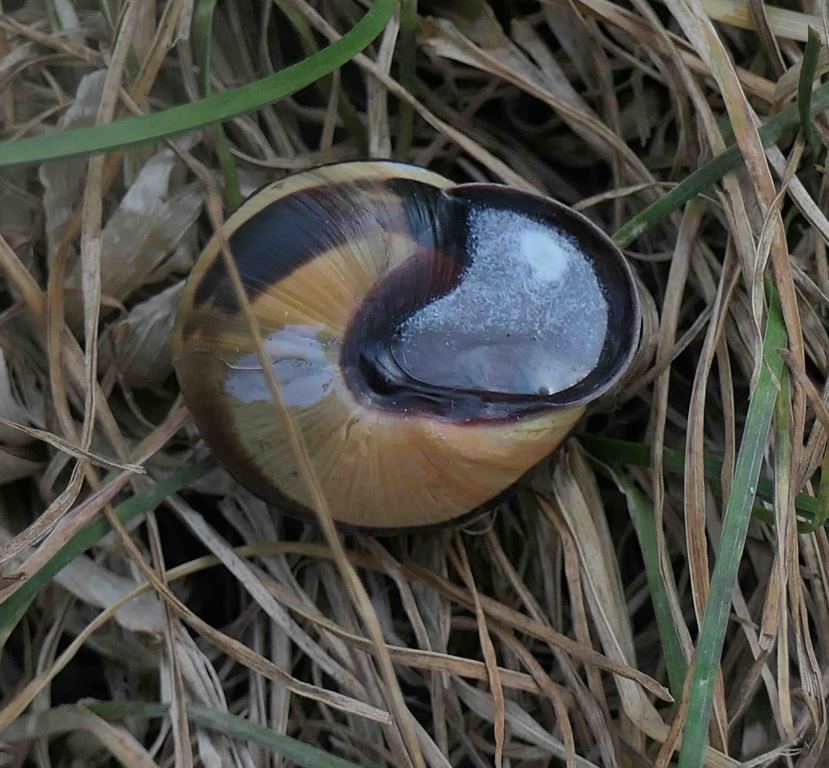
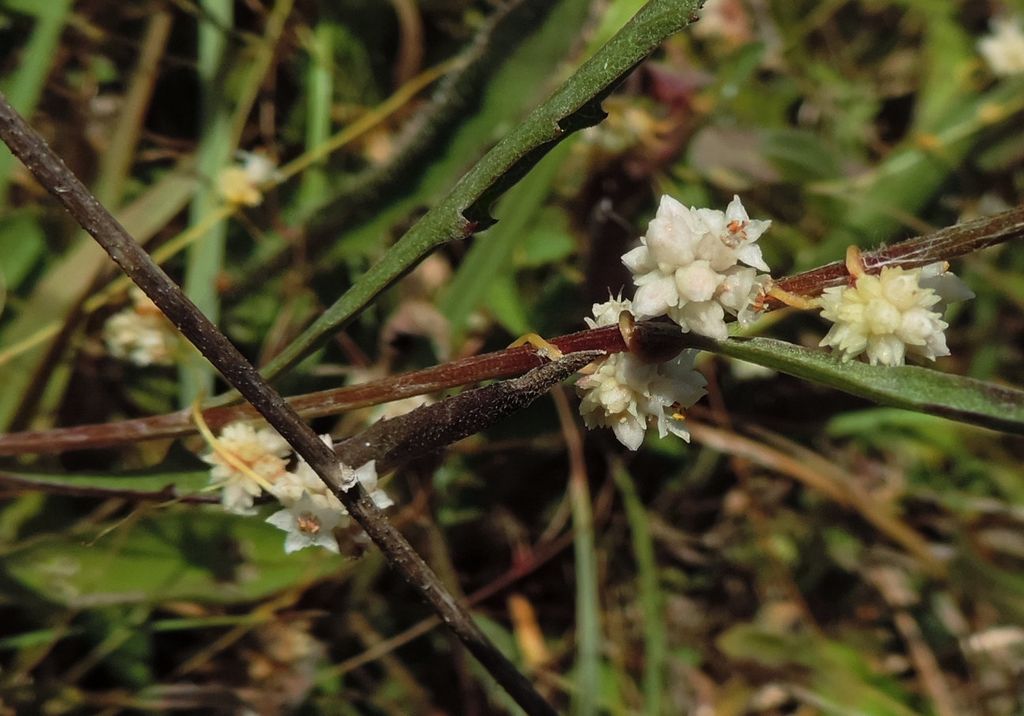
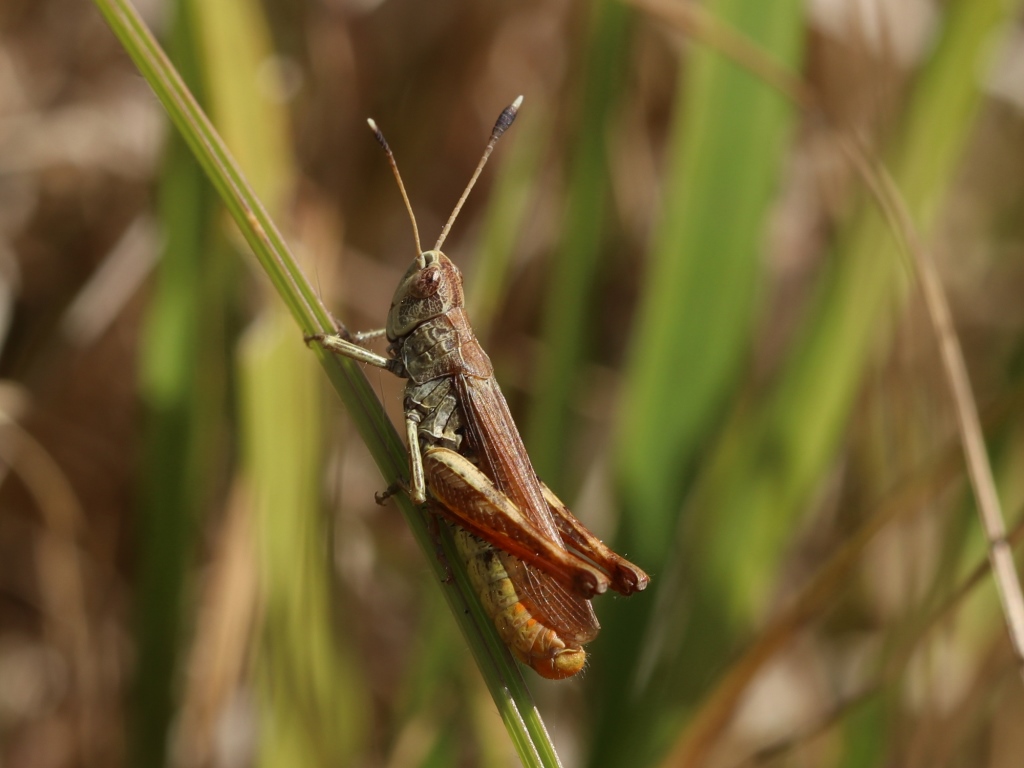
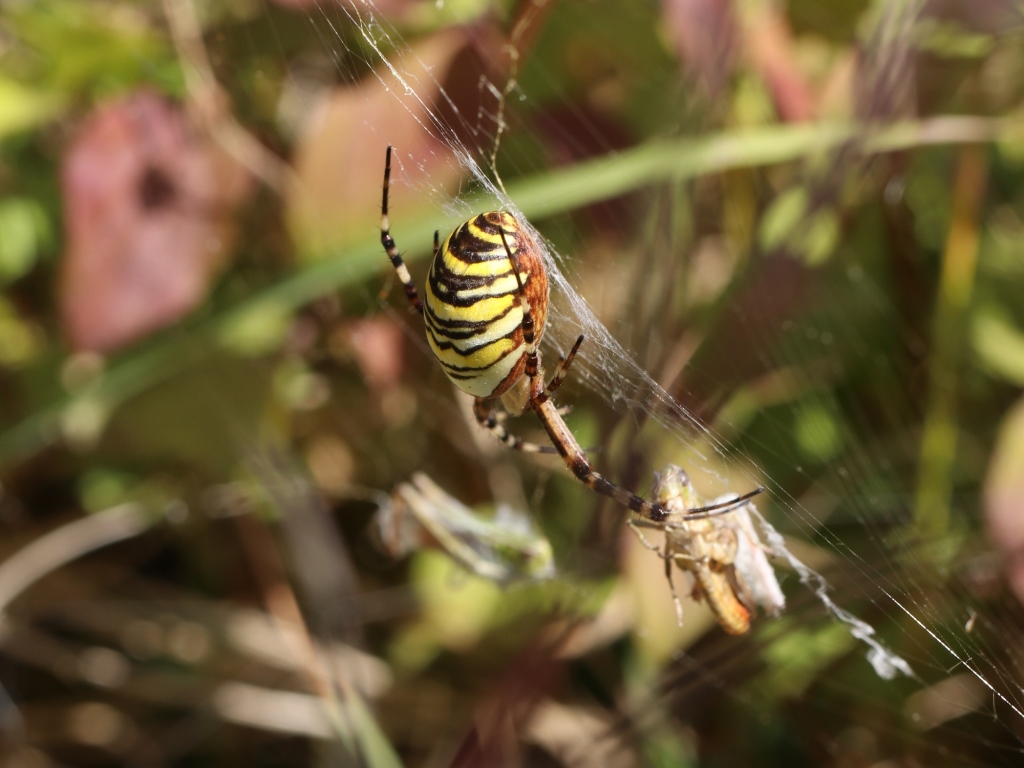
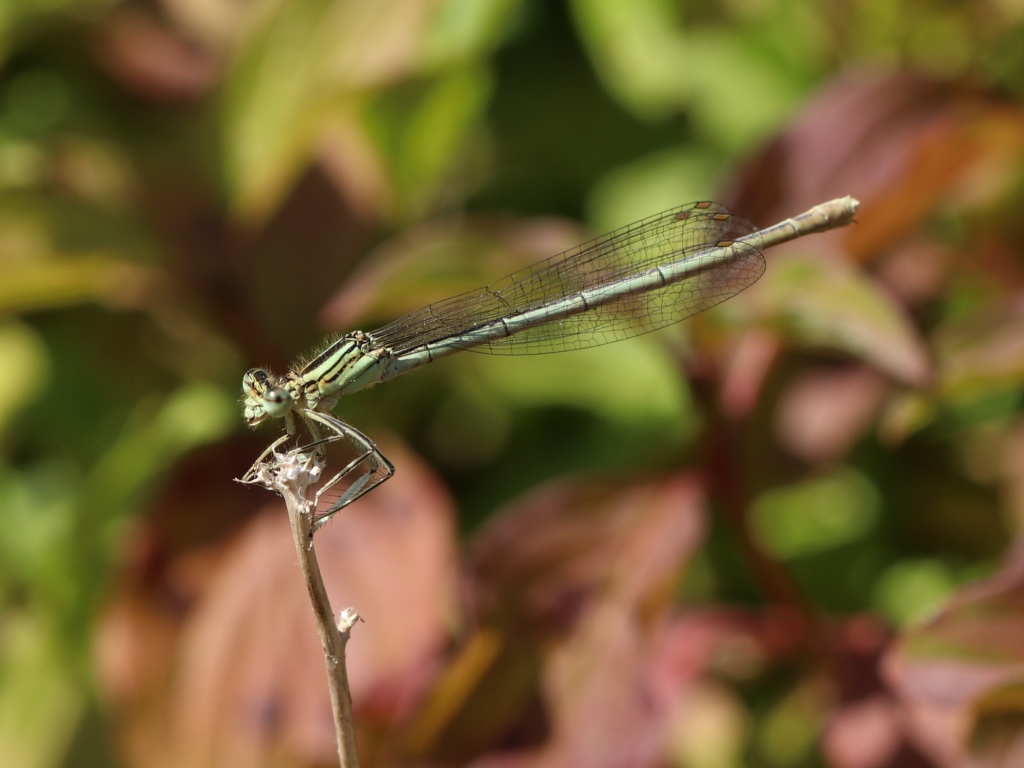
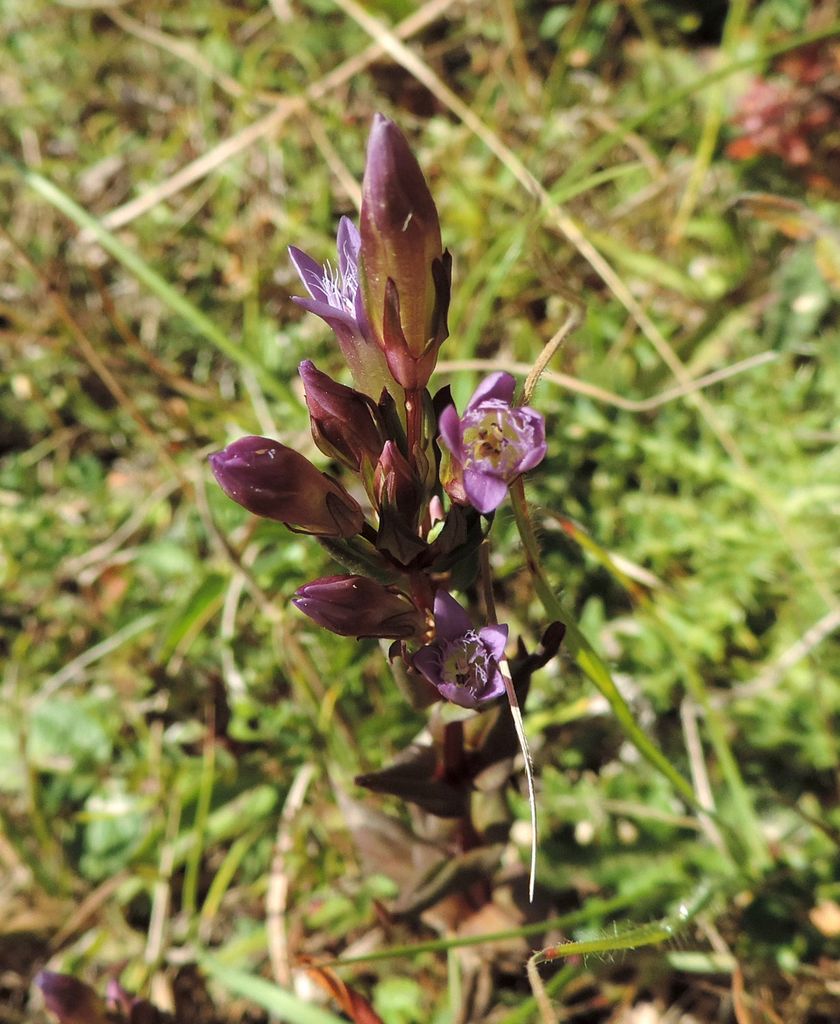
Pictures by Tom Walker, Sue White and Rob Stallard
